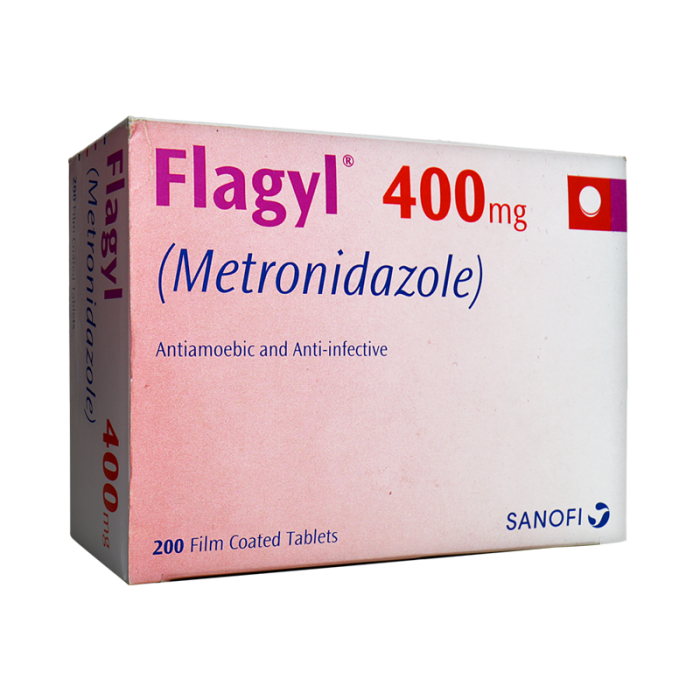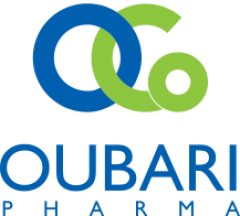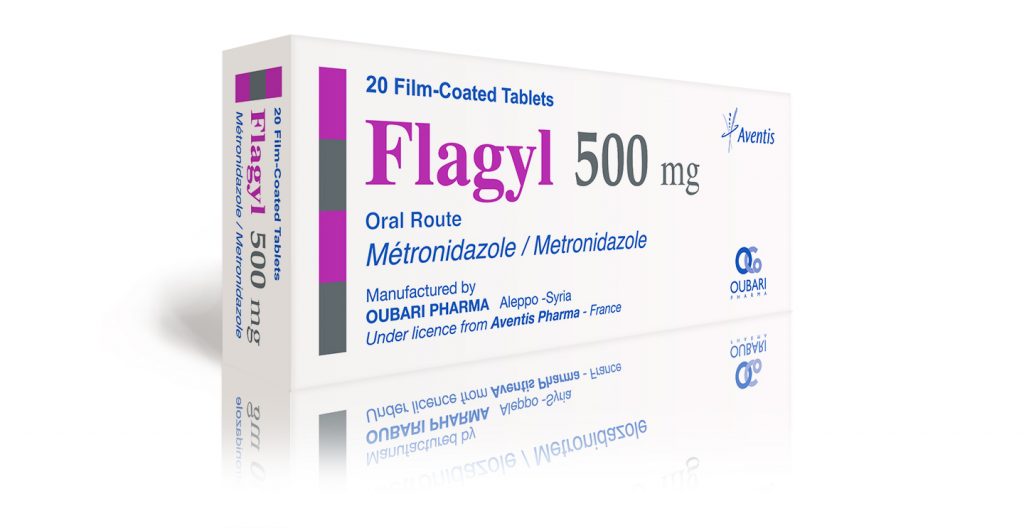Metronidazole belongs to the drugs of the 5-nitroimidazole group (5-NIMZ). These are highly active broad-spectrum antimicrobials for the systemic treatment of infections caused by obligate anaerobic bacteria and a number of infectious diseases caused by protozoa. In addition, 5-NIMZ are also active against individual representatives of facultative anaerobes (microaerophiles) and, accordingly, are effective in the clinic for infections caused by these microorganisms. 5 – NIMZ – synthetic, low molecular weight compounds containing a nitro – group (NO2) at position 5 of the imidazole ring. By their biological properties and the mechanism of antimicrobial action, 5-NIMZ is fundamentally different from imidazole derivatives with antifungal activity. Imidazole antimycotics have a more complex chemical structure, in the structure of their molecule in the imidazole ring there is no nitro-group or any other substituents. In 1956-1957. As a result of exploratory studies in a series of nitroimidazoles, it was shown that the highest antimicrobial activity is shown by derivatives of 5-nitroimidazole. At the first stages of the study, only antiprotozoal activity was established for these compounds. In 1957, 5-NIMZ – metronidazole was synthesized, which already in 1960 was used in the clinic for the treatment of Trichomonas infection. The drug is still highly effective in this infectious disease. A detailed study of the biological and antimicrobial properties of metronidazole has also established its high activity against obligate anaerobes. The clinical efficacy of metronidazole and the specificity of its antimicrobial spectrum of action determined further intensive searches for new compounds in the series of metronidazole analogues. As a result, a number of new highly effective drugs were developed, also with high activity against anaerobic bacteria and some protozoa (Table 1).

All the most active drugs of this series, used in clinical practice, necessarily have a nitro group at position 5 of the imidazole ring, and some differences in their biological properties are associated with the modification of the structure of substituents at positions 1 and 2 of the cycle. The structure of these substituents determines the difference in the physicochemical properties of drugs and, accordingly, the features of their action. The drugs practically do not differ in their spectrum and degree of activity; a number of differences are associated with pharmacokinetic and some toxicological properties, in particular, with the interaction with alcohol and with the developed dosage forms. All drugs of group 5-NIMZ are poorly soluble compounds. This is associated with the difficulties of developing injectable dosage forms. At the same time, high bioavailability and optimal distribution in the body make it possible in a number of cases to successfully use 5-NIMZ for the purpose of systemic action orally.
Metronidazole (Metrogyl) is one of the most widely used drugs in group 5-NIMZ in medical practice. It is equally widely used in surgical practice for the treatment of anaerobic infections, for protozoal infections (mainly for the treatment of trichomoniasis) and in the practice of gastroenterologists in the combined therapy of gastric ulcer and duodenal ulcer. For metronidazole, the largest number of dosage forms has been developed: for intravenous, oral, rectal, intravaginal, topical administration.
Antimicrobial activity and the mechanism of antimicrobial action Activity against obligate anaerobic microorganisms and microaerophiles Metronidazole, like other 5-nitroimidazoles, is active against most gram-positive and gram-negative obligate anaerobic bacteria, spore-forming and non-spore-forming, as well as against anaerobic cocci. Of greatest importance is the activity against bacteroids, primarily against Bacteroides fragilis, and various representatives of Clostridium spp. Strains of Propinibacterium acnes are resistant to nitroimidazoles. In terms of action on anaerobic bacteria, metronidazole is comparable to clindamycin protected by b-lactams (amoxicillin-clavulanate, piperacillin-tazobactam), slightly inferior to carbapenems (meropenem, carbapenem, ertapenem) and some new fluoroquinanaerobic activity with pronounced antiquinolone. The difference in activity depends on the properties of the strains. Of the microaerophiles (facultative anaerobes), metronidazole is active against Helicobacter spp., With activity against Helicobacter pylori being the most clinically important. In addition, the drug is active against Gardnerella vaginalis. The spectrum of action of metronidazole against anaerobic bacteria includes: – Bacteroides spp., Including B.fragilis, B.distassons, B.ovatus, B.thetaiotamicron, B.melaninigenicus, B.vulgatus, B.caccae, B.uniformis; – Fusobacterium spp., Eubacterium spp; – Clostridium spp., Including Clostridium perfringens, Clostridium difficile; – Peptococcus spp., Peptostreptococcus spp. With regard to the listed non-spore-forming anaerobic bacteria, the MIC range of metronidazole is in the range of 0.01–256 mg / L, the IPC90 range is in the range of 0.1–4–6.2 mg / L. Activity against fusobacteria and eubacteria is in the range of IPC90 0.5-4 mg / l. The drug is highly active against various spore-forming anaerobes Clostridium spp .: IPC90 range 1.6–4 mg / l. At the same time, it should be noted that some highly resistant strains are distinguished, for example, C. perfringens strains with a MIC of up to 128 mg / l. In accordance with the activity against anaerobic bacteria, metronidazole is effective in the treatment of anaerobic infection, and in clinical practice, as a rule, metronidazole is most widely used among 5-NIMZ, although drugs such as tinidazole and ornidazole are no less effective against anaerobes. This is due to the presence of a dosage form of metronidazole for parenteral use, which is necessary in cases of severe generalized infection of various localization, when anaerobes are also an etiological factor. An important property of metronidazole is its activity against the microaerophile Helicobacter pylori (MIC range from 0.125 to 32 mg / L). The activity of metronidazole and other 5-NIMZ in relation to H. pylori was very important for the eradication of this microorganism in combination therapy of gastric ulcer, duodenal ulcer, gastric lymphoma. Less studied is the activity of drugs in this group against Helicobacter heilmanii; this microaerophile is rarely the cause of the above infectious processes.
Metronidazole is active against another microaerophile – Gardnerella vaginalis. The IPC range is from 1 to more than 128 mg / l (IPC90 4 – 128 mg / l). This activity is of certain importance in the treatment of bacterial vaginosis, however, first of all, the effectiveness of metronidazole in this pathology is associated with a direct effect on the obligate anaerobic flora, which leads to the normalization of the ecosystem in vaginosis and, as a result, creates unfavorable conditions for the reproduction of gardnerella. Activity in relation causative agents of protozoal infections Among the causative agents of protozoal infections to metronidazole are sensitive: Trichomonas spp., Trichomonas vaginalis, Entamoeba hystolytica, Giardia lamblia (Lamblia intestinalis), Balantidium coli, some strains of Leishmania spp. The activity of the drug is high and is within the MIC of 0.3–6 mg / l. More resistant strains of Giardia lamblia. Metronidazole provides the death of G.lamblia trophozoids at concentrations from 1 to 50 mg / l. Under the action of metronidazole and other 5-NIMZs on the protozoan, the degree of activity depends not only on the effective dose of the drug and the sensitivity of the strain, but also on the exposure. The trichomonacid effect of metronidazole on 90% of Trichomonas vaginalis cells is manifested at a concentration of 2.5 mg / l and exposure for 24 hours. In experiments with Entamoeba histolytica, morphological changes in protozoan cells at a metronidazole concentration of 1–2 mg / l are observed after 6–20 hours, the full protistocidal effect at these concentrations occurs after 24 hours. At a concentration of 0.2 mg / l, the full protistocidal effect is recorded only after 72 hours. The features of the antimicrobial spectrum of metronidazole and its antianaerobic and antiprotozoal activity are determined by the peculiarities of the mechanism of action of the drugs of this group on the microbial cell. Mechanism of antimicrobial action Nitroimidazoles are drugs with a bactericidal and protistocidal type of action and belong to DNA-tropic compounds with selective activity against microorganisms that have enzyme systems – nitroreductases, capable of reducing the nitro group. These drugs, unlike most other antimicrobial agents, show their effect only after transformation in bacteria or protozoa cells. Nitroreductases catalyze the interaction of proteins of the ferridoxin group with nitro compounds in the microbial cell. After the penetration of metronidazole into a microbial cell under the action of nitroreductases, active metabolites 5-NIMZ are formed in the cell, which have a bactericidal and protistocidal effect. The targets of these metabolites are cell DNA and RNA and cellular proteins. The active reduced forms of drugs disrupt DNA replication and protein synthesis in the microbial cell. This process is simultaneously accompanied by the formation of free radicals, which also have a damaging effect on DNA. These processes lead to cell death. Reduced products and free radicals and other transformation products are removed from the cell. Metronidazole is characterized by rapid bactericidal and protistocidal action. The range of bactericidal concentrations in relation to B.fragilis strains is in the range of 0.03–2 mg / l, and for most of these strains in the range of 0.25–1.0 mg / l. The dependence of the bactericidal effect on the concentration has been established. The MBC values ??for the majority of anaerobic bacteria are equal or 2–4 times higher than the MIC. It is very important that the bactericidal concentrations of 5-NIMZ are significantly lower than those achieved in the body (in the blood and tissues) at therapeutic doses of drugs, which ensures high bactericidal activity in the infected organism. The postantibiotic effect (PAE) is also significant in the mechanism of action of this group of drugs. PAE for metronidazole in relation to anaerobic bacteria, depending on the effective concentration, is determined within up to 3 hours.
metronidazole for sale, buy flagyl, order flagyl, metronidazole nyc, flagyl california, buy metronidazole south africa, cheap flagyl, antimicrobal drug




